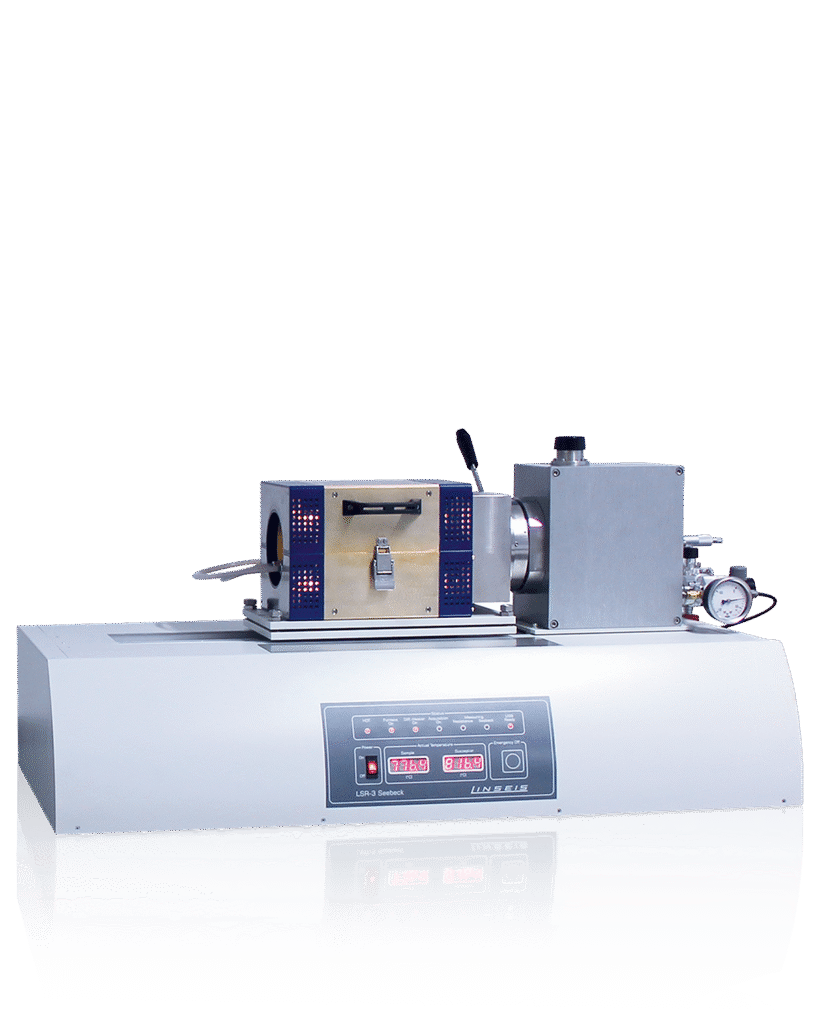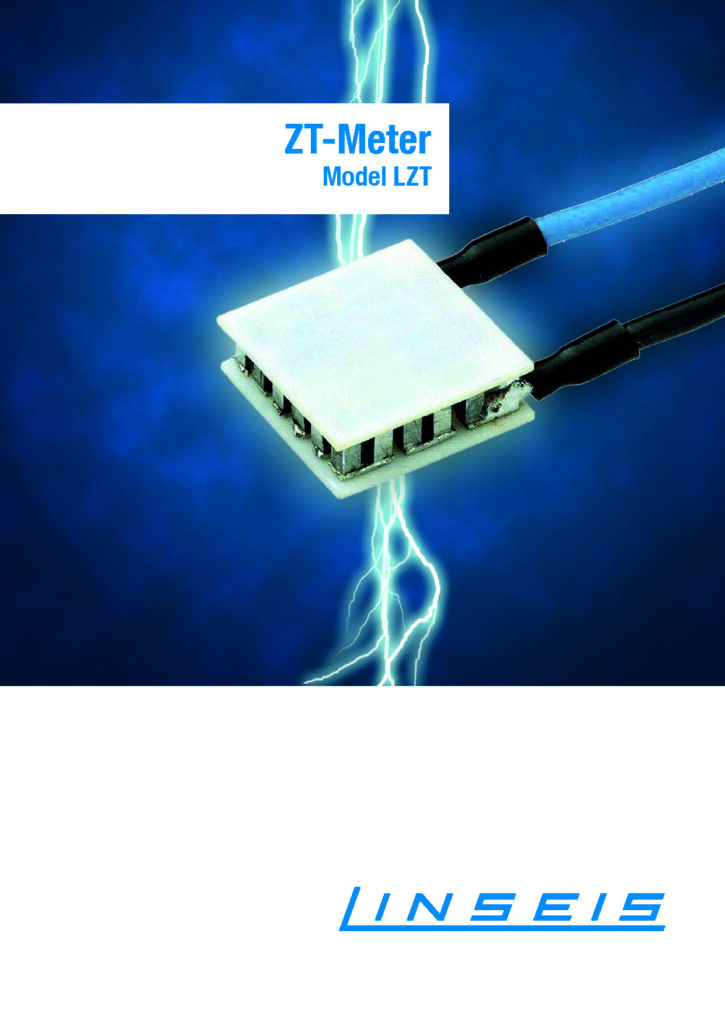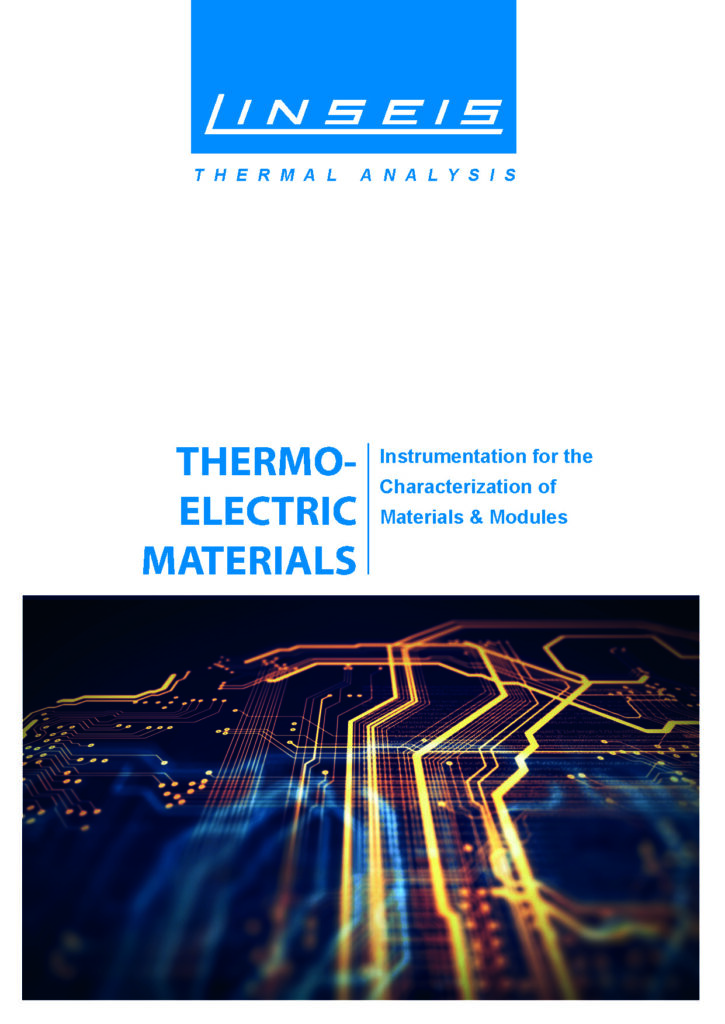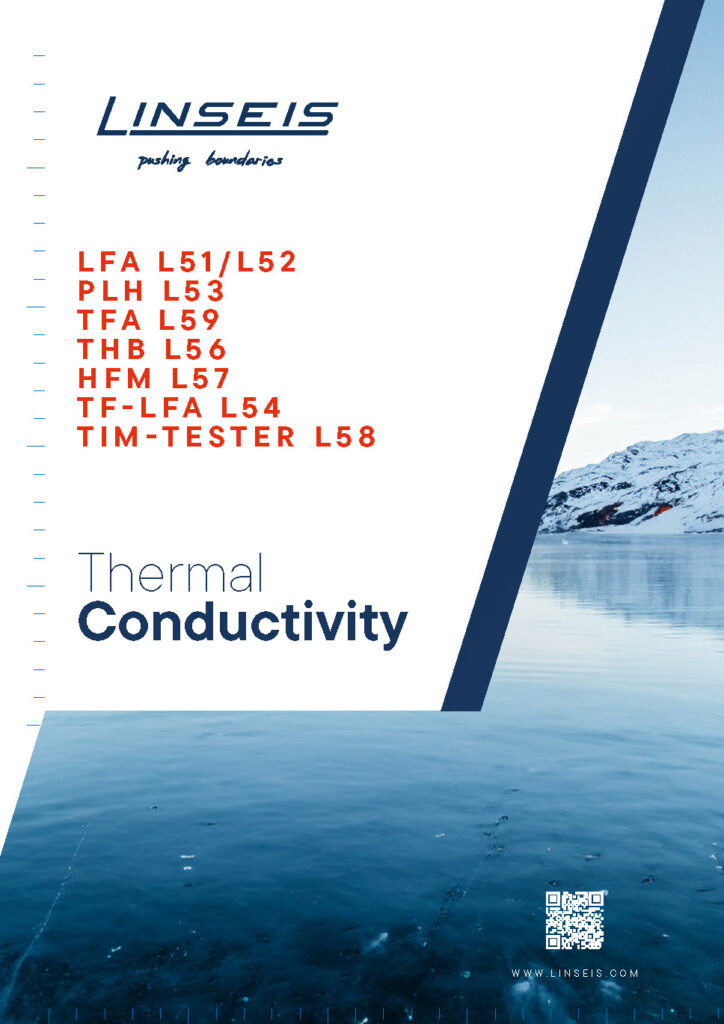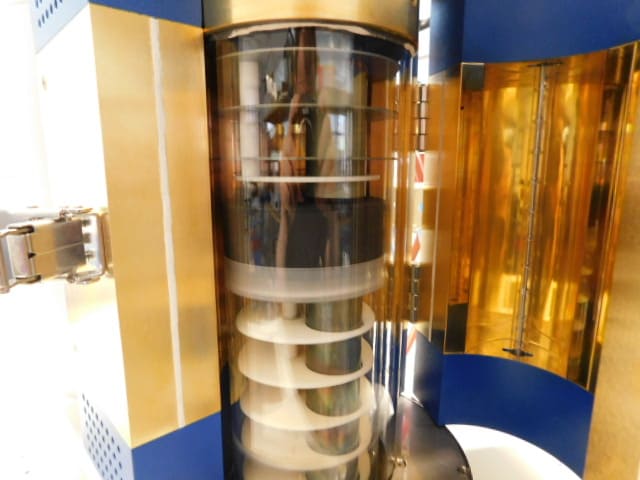Description
To the point
The Linseis LZT-Meter (LZT L33) is the world’s first commercially available instrument that allows the determination of the thermoelectric Figure of Merrit ZT by means of a combined Laser Flash (LFA L52) and LSR measurement in a single instrument.
Accordingly, an independent determination of the thermal conductivity by means of a flash method as well as a measurement of the electrical resistance and of the Seebeck-Coefficient (known from the LSR platform) can be carried out with this measuring device.
The advantage is obvious: The integrated design can save both, expensive laboratory space and unnecessary costs for double furnaces, measuring electronics and other equipment. Thus, the LZT-Meter (LZT L33) is the ideal solution for research and development applications where the focus is not set on high sample throughput but on measurement quality and cost-efficiency. Because for the complete ZT-characterization of the sample, a single, disk-shaped geometry is completely sufficient.
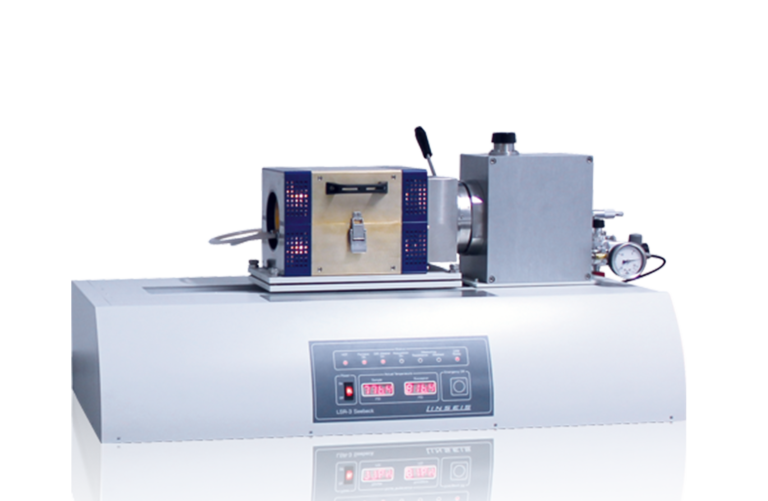

Advantages of the combined measurement:
- Measurement of a single sample
- No geometry error
- Same stoichiometry
- No problems with further sample preparation
- Identical environmental conditions
- Temperature
- Humidity
- The atmosphere
Furthermore, all well known advantages of the LSR-Platform
- Resistivity measurements of high-resistance samples possible
- Optional Harman measurement
- Camera option
The unit is also available with three different furnaces:
- An infrared furnace (for precise temperature control at very high and low heating rates)
- A low-temperature furnace for measurements down to -100°C
- A high-temperature furnace for measurements up to 1100°C
The supplied software package offers the possibility to evaluate all measurement data in a user-friendly way and to use the optionally integrated Harman ZT model.
Unique Features
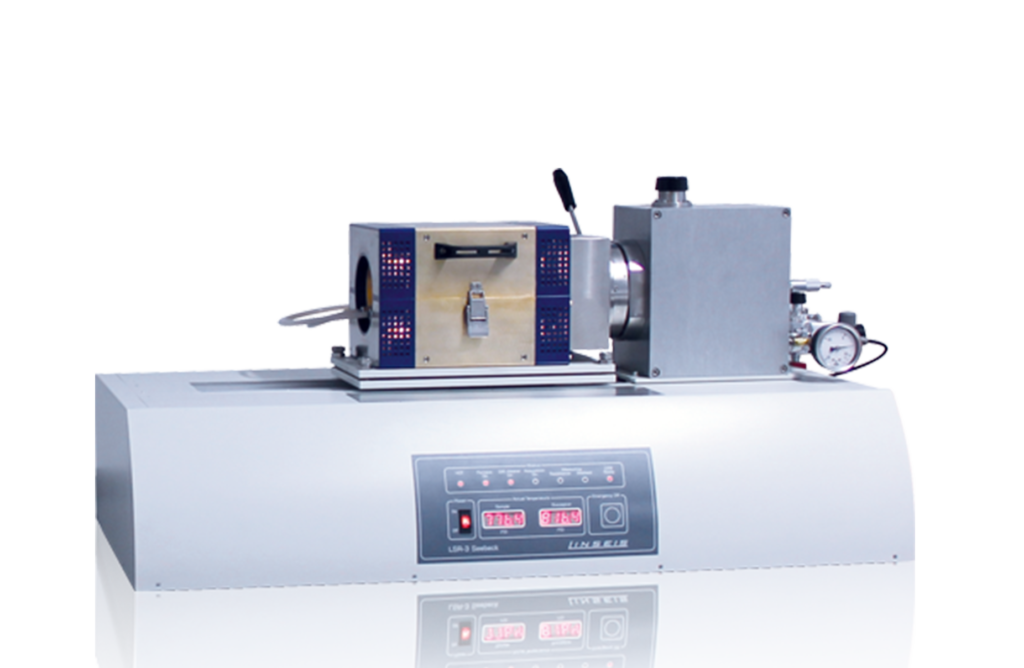
Combined measurement:
Integrates laser flash and Seebeck
coefficient measurement in one device.
Cost-efficient and space-saving:
saves laboratory space and reduces
costs thanks to the integrated design.
Wide temperature range:
Measurements from-100°C
to 1100°C possible.
High precision:
Minimal geometric errors
and identical ambient
conditions.
Modular furnaces:
Various furnaces options for
specific requirements.
Questions? We're just a call away!
+1 (609) 223 2070
+49 (0) 9287/880 0
Our service is available Monday to
Thursday from 8-16 o’clock
and Friday from 8-12 o’clock.
We are here for you!
Specifications
Hard Facts

- Only one integrated measuring device is required for a complete ZT characterization
- Cost-efficient and space-saving
- Thanks to the high-ohm option and variably positionable thermocouples, even the most demanding samples can be reliably measured
- Measurements in the temperature range from -100°C to 1100°C are possible using interchangeable furnaces
- Direct ZT measurement on legs (Harman method) and modules (impedance spectroscopy)
- Thermal conductivity measurement using the LaserFlash method
- High-speed infrared furnace for excellent temperature control during measurement and higher sample throughput
- Wide range of available thermocouples (temperature range, sheathed, free-standing)
- Camera option for high-precision resistivity measurements
MODEL | LZT-Meter (LZT L33) |
|---|---|
| Temperature range: | Infrared furnace: RT up to 800°C/1100°C Low temperature oven: -100°C to 500°C |
| Measurement method: | Seebeck coefficient: Static DC method / Slope method Electrical resistance: four-point measurement |
| Atmosphere: | Inert, reducing, oxidizing, vacuum Helium gas with low pressure recommended |
| Sample holder: | Vertical clamping between two electrodes Optional adapter for foils and thin layers |
| Sample size (cylinder or rectangle): | 2 to 5 mm base area and max. 23 mm long up to a diameter of 6 mm and a length of max. 23 mm long |
| Sample size round (disc shape): | 10, 12.7, 25.4 mm |
| Measuring distance of the thermocouples: | 4, 6, 8 mm |
| Water cooling: | required |
| Measuring range Seebeck coefficient: | 1µV/K to 250mV/K (static DC method) Accuracy ±7% / Repeatability ±3.5% |
| Measuring range Electrical conductivity: | 0.01 to 2×105 S/cm Accuracy ±10% / Repeatability ±5% |
| Current source: | Low-drift current source from 0 to 160 mA |
| Electrode material: | Nickel (-100 to 500°C) / Platinum (-100 to +1500°C) |
| Thermocouples: | Type K/S/C |
| Heat conductivity | |
| Pulse source: | Nd:YAG laser (25 joules) |
| Pulse duration: | 0.01 to 5ms |
| Detector: | InSb / MCT |
| thermal conductivity | |
| Measuring range: | 0.01 to 1000mm2/s |
| Addon | LSR-4 upgrade |
| DC Harman method: | Direct ZT measurement on thermoelectric legs |
| AC impedance spectroscopy: | Direct ZT measurement on thermoelectric modules (TEG/Peltier module) |
| Temperature range: | -100 to +400°C RT to +400°C |
| Sample holder: | Needle contacts for adiabatic measuring conditions |
| Sample size: | 2 to 5 mm in rectangle and max. 23 mm long up to 6 mm in diameter and max. 23 mm long Modules up to 50mm x 50mm |
Software
Making values visible and comparable
The powerful, Microsoft® Windows® based LINSEIS thermal analysis software performs the most important function in the preparation, execution and evaluation of thermoanalytical experiments, in addition to the utilized hardware.
With this software package, Linseis offers a comprehensive solution for programming all device-specific settings and control functions, as well as for data storage and evaluation. The package was developed by our in-house software specialists and application experts and is tested and extended since many years.
LFA properties
- Accurate pulse length correction, “pulse mapping”
- Heat loss correction
- Analysis of 2- or 3-Layer Systems
- Measurement of contact resistance of multilayer systems
- Model Wizard for the selection of the best evaluation model
- Determination of specific heat capacity
LSR Properties
- Cylindrical, square-shaped and disk-shaped samples are supported
- High- and low-temperature furnaces available
- Barrier-free programmable
- Thin film adapter for flexible as well as stable thin films
- Program wizard integrated
- Determination of the Seebeck effect, electrical conductivity and Harman-ZT
General properties
- Automatic evaluation of the Seebeck coefficient and the electrical conductivity
- Automatic control of sample contacting
- Creating Automatic Measurement Programs
- Creating temperature profiles and temperature gradients for the Seebeck measurement
- Automatic evaluation of Harman measurements (optional)
- Real-time color rendering
- Automatic and manual scaling
- Representation of the axes freely selectable (e.g. temperature (x-axis) versus delta L (y-axis))
- Mathematical calculations (e.g. first and second derivative)
- Database for archiving all measurements and evaluations
- Multitasking (different programs can be used at the same time)
- Multi-User Option (user accounts)
- Zoom options for curve cuts
- Any number of curves can be loaded on top of each other for comparison
- Online Help Menu
- Free labeling of curves
- Simplified export functions (CTRL C)
- EXCEL® and ASCII export of measurement data
- Zero curves can be calculated
- Statistical trend evaluation (mean value curve with confidence interval)
- Tabular expression of the data
Applications
Application example for LSR-funtion: Tellurid
A typical thermoelectric material from the telluride family has tested in the temperature range from RT up to 200°C. You can see the electric resistivity and Seebeck coefficient over the temperature.
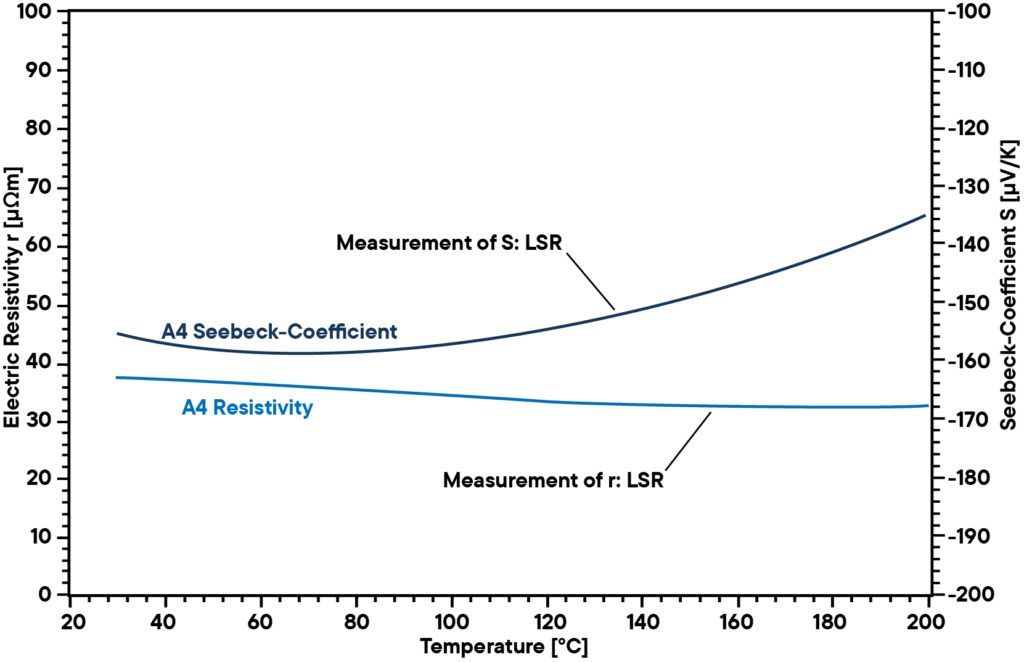
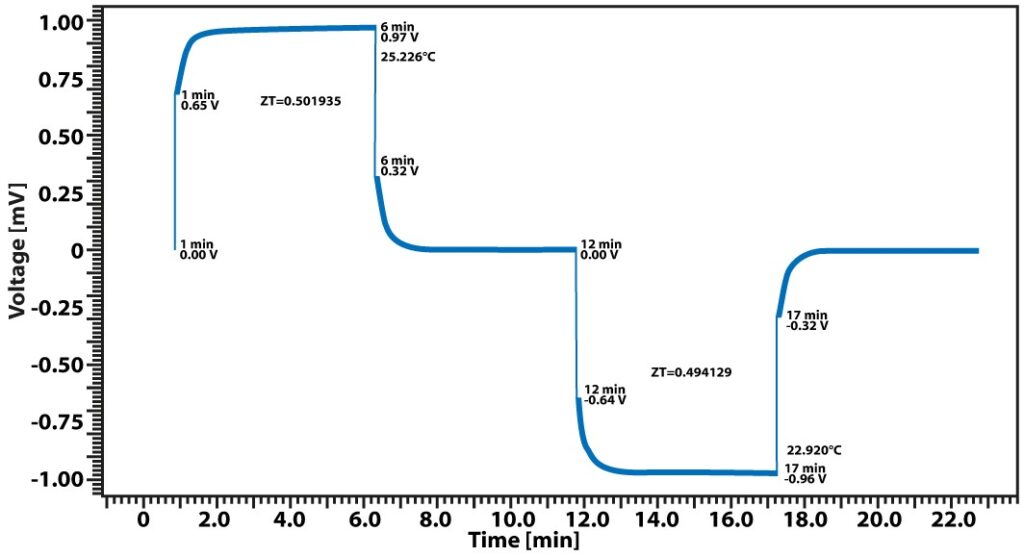
Application example: Bismuth telluride – figure of merit
The figure of merit ZT describes the performance of a thermoelectric material. Normally ZT is calculated from the thermal and electric conductivity and the Seebeck coefficient. These three properties are measured seperately each measurement having a certain error.
The Harman method allows to measure ZT directly in only one measurement: the voltage measured applying a current on a thermoelectric material has two contributions: the ohmic drop and the thermo-voltage. Dividing one by the other gives ZT.
The NIST (SRM 3451)™ Bi2Te3 Bismuth telluride reference material has been analyzed using the Harman method in combination with our LINSEIS LSR platform. The measurement clearly shows the typical voltage distribution at a single temperature measurement point. In this case, the ZT “figure of merit” value at room temperature can be simply calculated by setting the ohmic voltage drop and the thermoelectric voltage drop in relation. ZT was found to be 0.50 at room temperature.
Application: Graphite
Graphite is a carbon species that occurs as a dark grey solid. It has a considerable high chemical resistance and is used in many ways, for example as cathode material, construction material, sensor component and many more. If heated, it reacts with oxygen to carbon monoxide or carbon dioxide, however it can reach very high temperatures if it is heated in inert, oxygen free environment and for this reason it is used in ultra-high temperature furnaces as furnace material or even heater.
In this example, a graphite sample has been analyzed in vacuum using a LFA 1000 (Laserflash Analyzer). Thermal diffusivity has been measured directly at several temperature steps between RT and 1100°C. Specific heat capacity has been determined using a known graphite standard in a second sample position as a reference in the same measurement. The product of diffusivity, specific heat and density gives the corresponding thermal conductivity. The result shows a linear decreasing thermal conductivity which is typical and a thermal diffusivity that is showing a plateau above 500°C. The Cp is slightly increasing over temperature.
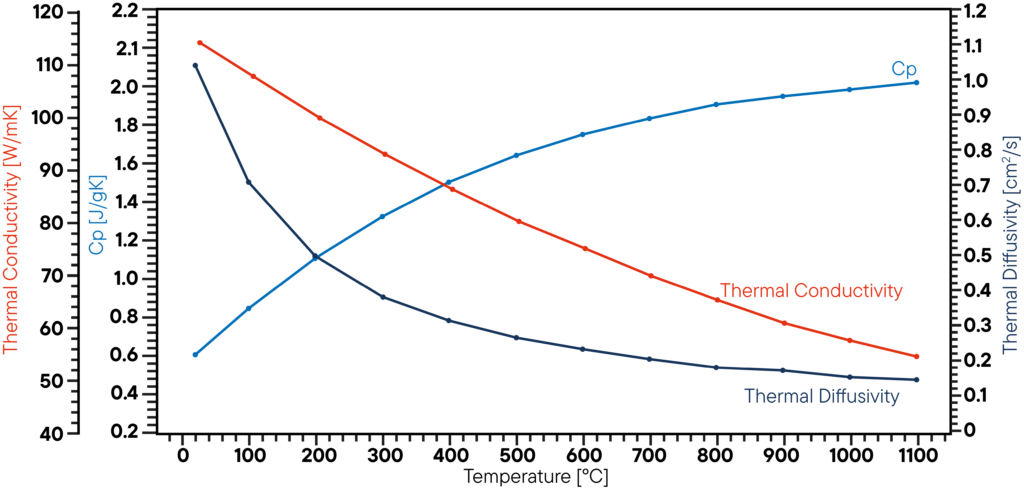
External applications
Effect of the Order-Disorder Transition on the Seebeck Coefficient of Nanostructured Thermoelectric Cu2ZnSnS4 (published Nanomaterials)
well informed
